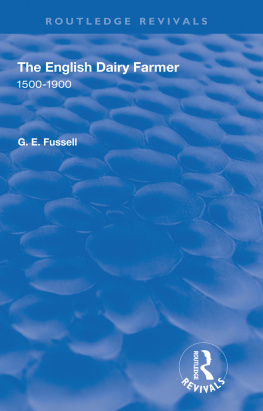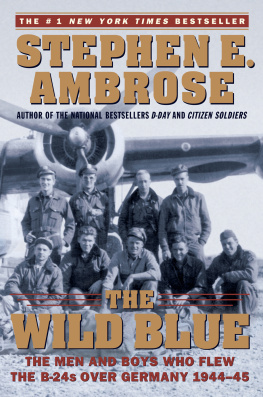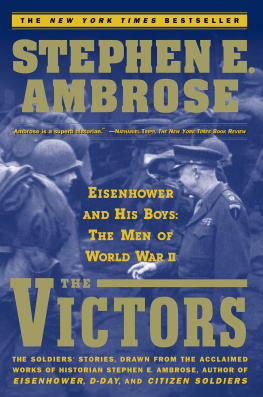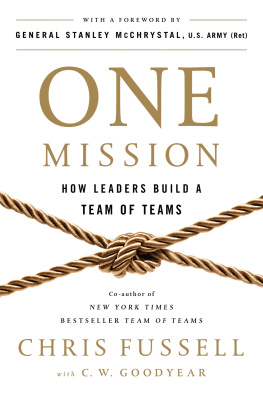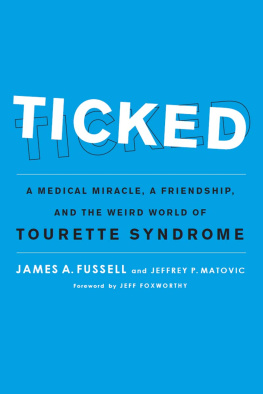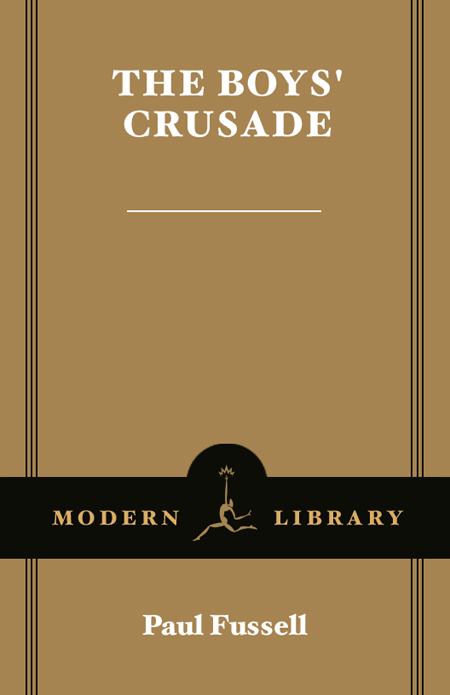
Paul Fussell
THE BOYS
CRUSADE
The American Infantry in
Northwestern Europe, 19441945

A MODERN LIBRARY CHRONICLES BOOK
THE MODERN LIBRARY
NEW YORK
Contents
TO THOSE ON BOTH SIDES
WHO SUFFERED
Acknowledgments
For their interest and help, I want to thank Michael Barber, Harriette Behringer, Clifford J. Case, Thomas Childers, Sam Fussell, Toby Harke, Robert Kotlowitz, Scott Moyers, Seth Notes, Tim OBrien, Mercedes Ruiz, J. T. Scanlan, Roger Spiller, Studs Terkel, and Russell Weigley.
Weigley is the historian I have relied on with the greatest appreciation for the accuracy of his scholarship and his sensitivity to humane values. Others in this category are Martin Blumenson and Charles MacDonald.
There is a lot of Robert Kotlowitz in this book. He is a person I admire for his immunity to the degradations of infantry combat and for his humor and his sympathy for his fellow soldiers, even when theyre behaving badly.
Gwen Gatto has again rendered herself indispensable by her cheerful command of the word processor. I thank her most warmly for her sharp eye and her patience.
Preface
Those intimate with the military and its ways have experienced the armys obsession with the Western European campaign of World War II. Even today, after all its subsequent action in the Middle Eastern deserts and the Asian swamps, the struggle in France and Germany in 1944 and 1945 seems to remain the armys point of reference for its conception of warfor the way it sees itself, its doctrine, its organization and training, its equipment, and its professional idioms. When the military looks for an instructive classic, it is the European war on the ground that is likely to be the model.
We may ask why, and this book may suggest a few answers. For one thing, unlike both the Korean and Vietnam wars, it ended well for the United States. And refracted in narrative, the war in Europe can be shown to possess a vivid moral structure, gratifying to both the historian and the normal patriotic reader.
At the ARCADIA Conference held in Washington in January 1942, Roosevelt and Churchill discussed what they should do to turn a losing war into a winning one. A subordinate attendant at the conference, a mere major general named Eisenhower, listened carefully and arrived at a depressing truth for the United States. He wrote in his diary, Weve got to go to Europe and fight. That is, air power alone, as some had been arguing, could not win the war, nor could a naval blockade nor other techniques less nasty than personal soldierly encounters on the ground. Infantry, he realized, would have to bear the ultimate burden, and winning the war by that means would be inescapably bloody.
Going to Europe and fighting there meant a dramatic increase in the small number of peacetime ground troops, and soon all over America training camps appeared: two-story white clapboard barracks, together with leveled-off parade grounds and firing ranges for small arms and artillery. And all had to be so superficial and temporary that after the war, the whole setup could be removed, leaving not a trace behind.
It was at scores of these camps that the draftees required by the ground forces were prepared for war. After a maximum of seventeen weeks basic trainingsome received lessover two million young men were organized into eighty-nine divisions, each containing about twelve thousand soldiers. Not all fought, but the majority of these were shipped to the Continent to begin the process of destroying the German army, generally regarded as the best and the largest in the world. As Eisenhower conceived, winning the war would require first, slugging with air at West Europe, to be followed by land attack as soon as possible. Slugging with air: as a check on self-righteousness, its well to remember that in July and August of 1943, the RAF and the U.S. Eighth Air Force burned to death thirty thousand civilians, of both genders and all ages, in Hamburg.
Actually, the United States had been surreptitiously in the war before the Japanese attack on Pearl Harbor and the German declaration of war that followed. The United States had been flagrantly violating its announced neutrality by sending Britain food, arms, tanks, aircraft, and ammunition, all at risk of being sunk by German U-boats, which prowled the Atlantic Coast looking for freighters. Sinkings were sometimes near enough to be watched by vacationers in Florida.
Once officially in the war, the American ground forces were prepared in England to obey the orders of the Combined Allied Chiefs of Staff. Addressing Eisenhower, the newly appointed Allied Supreme Commander, they said, You will enter the Continent of Europe and... undertake operations aimed at the heart of Germany and the destruction of her armed forces.
On June 6, 1944, the slaughter of the frontal assault at Omaha Beach would warn of ample horrors to come. Until May 1945, the boys of America, with British and Canadian assistance, edged close to the heart of the enemy by overcoming in a series of encounters the retreating enemy at his successive defense lines. Some were rivers, some fortified areas, some shrewdly flooded ground. Most featured the new menace of antipersonnel mines, whose removal by combat engineers delayed attacks frequently. All these defenses were held with what seemed diabolical determination by an enemy fighting, it believed, for civilizations whole future existence.
Once loosed from the Normandy beachhead and its surroundings, the Americans faced the sobering fact that the nearest German border was 350 miles away, every foot of which had to be cleared of German soldiers. Getting to Germany took three months, even though the Americans were able to inject many new divisions into their line after invading southern France near Marseille on August 15. By August 25 German-occupied Paris was in sight and yielded without a struggle, and by December 15, the Americans were arrayed along the west bank of the Rhine from Holland to Switzerland, preparing for the final assault on Germany proper and the total destruction of its power to resist. Throughout these attacks in the west, the Americans coordinated their tactics with the Russian advance against Germanys eastern front. But by the fall of 1944, it became apparent that the Allies had seriously outrun their supplies, and as the weather worsened, they halted in eastern France and gradually despaired of ending the war before spring 1945. The war had four more months to run until the German surrender on May 8. Before the end of the carnage, 135,000 American boys were dead, 586,628 wounded.
The problem of offering an account of one dimension of the European war was how to squeeze eleven months of fighting and fear into a short book. Certainly not by trying to tell all, moving day by day from the Normandy landings (already sufficiently depicted in film and memoir) all the way to the surrender.
Finally I decided that the essence of the war on the ground might be conveyed by rigorous selection and intense focus on instructive contrasts and surprisesthe fun of drinking and sex in London making up for the miseries of the troopship, and the shock of combat worse than any boy could have imagined.
It has been said that those who have not fought the Germans dont know what war is. In the Second World War, German troops, although gradually losing the war, were a hardened bunch compared with the boy members of what James Jones accurately called a reluctant draftee army.
Now, almost sixty years after the horror, there has been a return, especially in popular culture, to military romanticism, which, if not implying that war is really good for you, does suggest that it contains desirable elementspride, companionship, and the consciousness of virtue enforced by deadly weapons. In this book I have occasionally tried to confront this view with realistic details. Some readers may think my accounts of close warfare unjustifiably pessimistic in implication, but attention to the universal ironic gap between battle plans and battle actualities will suggest the ubiquity of much of my joyless material. There is nothing in infantry warfare to raise the spirits at all, and anyone who imagines a military victory gratifying is mistaken.
Next page


